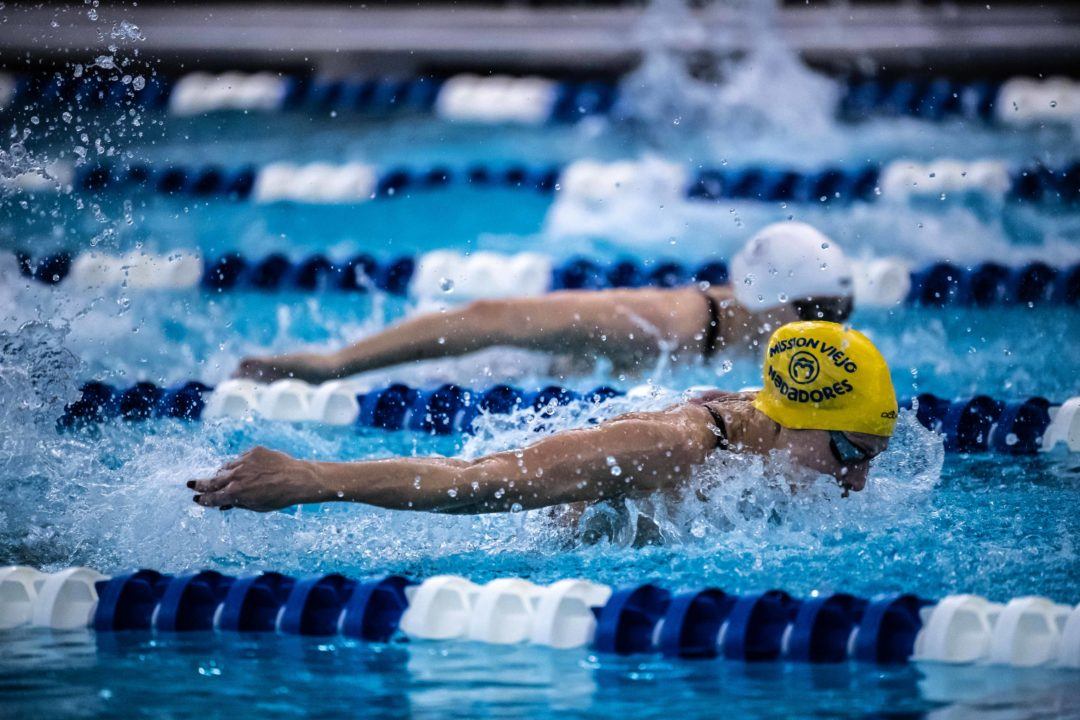
Courtesy of Gary Hall Sr., 10-time World Record Holder, 3-time Olympian, 1976 Olympic Games US Flagbearer and The Race Club co-founder.
Technology can be a wonderful tool in helping swimmers swim faster, if used properly. In spite of the success that our USA National Team swimmers have had in international competition for decades, we still live in a rather unsophisticated, low-tech sport. Most of the credit for our success in swimming faster goes to our great coaches and athletes.
At The Race Club, we feel that there is a great opportunity to help all swimmers swim faster using some new technology and improving the use of some not-so-new technology. Typically, it is not so challenging to help a slow swimmer swim faster, as they are making lots of mistakes in swimming technique. Many of those mistakes are visible from the deck. The question is can we use this technology to help our fastest swimmers get faster? They are certainly making fewer mistakes in their swimming technique and most of those may not be visible or discernable from the deck. Here is a good example.
 Recently, National Team member and world-class butterfly swimmer, Amanda Kendall came to The Race Club for some Velocity Meter (VM) and Pressure Meter (PM) testing. The VM measures velocity, acceleration, and deceleration synchronized to video and the PM measures the pressure (force) on the pulling hands, body rotational speed, and body rotation synchronized to video. Both provide useful but different information.
Recently, National Team member and world-class butterfly swimmer, Amanda Kendall came to The Race Club for some Velocity Meter (VM) and Pressure Meter (PM) testing. The VM measures velocity, acceleration, and deceleration synchronized to video and the PM measures the pressure (force) on the pulling hands, body rotational speed, and body rotation synchronized to video. Both provide useful but different information.
Testing Fast Swimmers
In doing her VM testing, I asked Amanda if we could make a slight change in her butterfly technique and test for the outcome. She agreed. Her normal technique while breathing was to keep the head position more or less in alignment with her upper body, resulting in very little motion in her neck. We tested her using her normal swimming technique and then asked her to extend her neck more fully for the breath and flex the neck fully to her chest after the breath, resulting in significantly more head motion. She had never actually done that before.
It took us a while to compile all of the data from our testing, but in the meantime, without my knowing it, Amanda went home and continued using the more aggressive head motion during the breath in swimming training. She said later that swimming simply felt faster doing it that way.
Before we had a chance to discuss the results of our test, Amanda went to USA Winter Nationals swim competition and won the 100 m butterfly in a PR of 57.8, using that new swimming technique. Not surprisingly, when we finally went over the results of the VM, we found that there was a significant increase in her body’s acceleration as a result of snapping the head down farther and faster, rather than laying it down after the breath. Most important, we also found an increase in her overall swimming velocity. Comparing Amanda to Kelsi Worrell Dahlia, whom we had tested with the VM over a year earlier using a similar ‘head-in-alignment’ butterfly swimming technique, we found that with her new swimming technique, Amanda had more acceleration on the second down kick after the breath (coinciding with the head snapping down).
When we finally discussed the results, I was surprised to hear Amanda say that she had already changed her swimming technique, but I was happy to hear that it helped her swim faster in Greensboro at Winter Nationals. We also found two other technical errors she was making, which we believe will help her swim even faster. The point is that VM and PM technology can help any swimmer at any level, swim faster.
You will find the full details of our study in Lanes 1, 2, 3 and 4 this week on our Race Club subscription, or on the home page of our website at www.theraceclub.com. We hope you will enjoy this complementary video and look forward to helping you swim faster.
Yours in swimming faster,
Gary Sr.

Gary Hall, Sr., Technical Director and Head Coach of The Race Club (courtesy of TRC)
Like The Race Club on Facebook
Follow The Race Club on Instagram
Follow The Race Club on Twitter
Connect to The Race Club / Gary Hall Sr. on Linkedin
[email protected]
See The Race Club HQ here.
THE RACE CLUB
Because Life is Worth Swimming, our mission is to promote swimming through sport, lifelong enjoyment, and good health benefits. Our objective is for each member of and each participant in The Race Club to improve his or her swimming performances, health, and self-esteem through our educational programs, services and creativity. We strive to help each member of The Race Club overcome challenges and reach his or her individual life goals.
The Race Club provides facilities, coaching, training, technical instruction, video, fitness and health programs for swimmers of all ages and abilities. Race Club swim camps are designed and tailored to satisfy each swimmer’s needs, whether one is trying to reach the Olympic Games or simply improve one’s fitness. Our programs are suitable for beginner swimmers, pleasure swimmers, fitness swimmers, USA swimming or YMCA swimmers, or triathletes; anyone who wants to improve swimming skills. All of our Race Club members share an enjoyment of being in the water and use swimming to stimulate a more active mind and body.
Courtesy of The Race Club, a SwimSwam partner.

Hey guys, just curious how the workout routine may have changed with the move on to Frost.